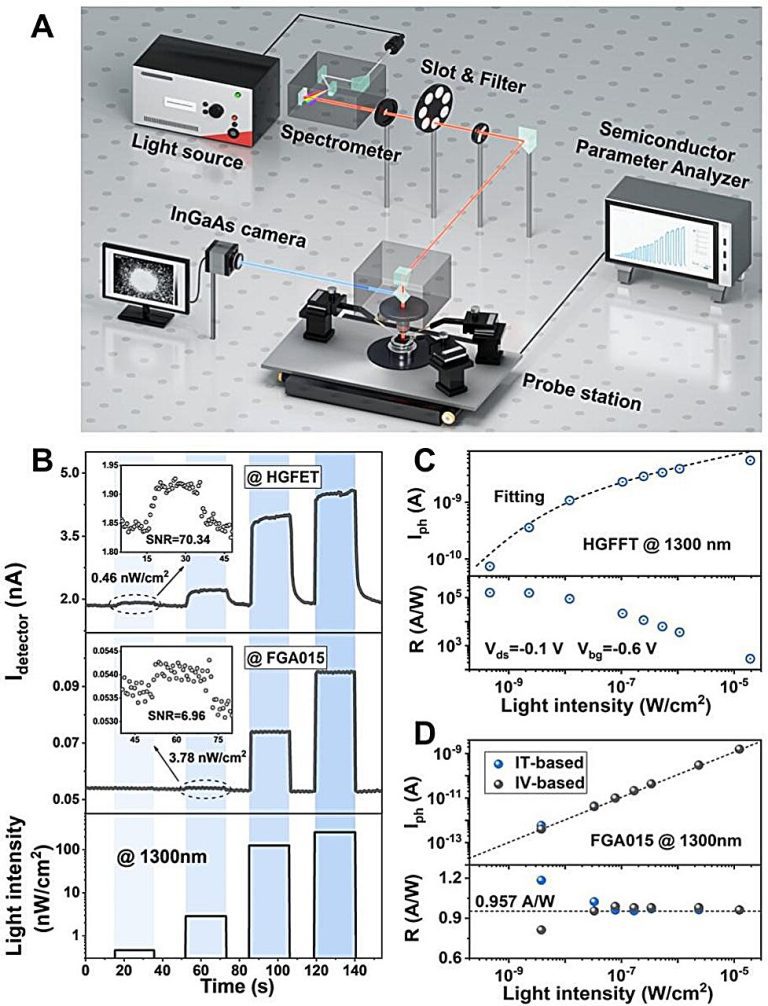
Comparative analysis of HGFET diodes, InGaAs and other thin film photodetectors. Credit: Peking University
Professor Zhang Zhiyong’s team at Peking University has developed a heterojunction field-effect transistor (HGFET) that achieves high sensitivity in short-wave infrared sensing, with a recorded specific detectivity greater than 1014 Jones at 1,300 nm, making it capable of detecting starlight. Their research was recently published in the magazine Advanced materialstitled “Opto-electrically decoupled phototransistor for starlight detection”.
Highly sensitive shortwave infrared (SWIR) detectors are essential for detecting weak radiation (typically below 10−8 W−1·cm−2·µm−1) with high-end passive image sensors. However, traditional SWIR detection based on epitaxial photodiodes cannot effectively detect ultraweak infrared radiation due to the lack of inherent gain.
To fill this gap, researchers from the School of Electronics at Peking University and their collaborators presented a heterojunction model field effect transistor (HGFET) which makes it possible to obtain ultra-high photo gain and exceptionally low noise in the short-wavelength infrared (SWIR) region, benefiting from a design incorporating a full opto-electric decoupling mechanism.
The team developed an HGFET consisting of a colloidal quantum dot (CQD)-based pin heterojunction and a carbon nanotube (CNT), which detects and significantly amplifies SWIR signals with high inherent gain while minimally amplifying noise, leading to a recorded specific detectivity greater than 1014 Jones at 1300 nm and a maximum recorded gain-bandwidth product of 69.2 THz.
Direct comparative tests indicate that the HGFET can detect weak infrared radiation at 0.46 nW cm−2levels, thus making this detector much more sensitive than the commercial SWIR and reported detectorsand in particular allow the detection or vision of starlight.
More information:
Shaoyuan Zhou et al, Optoelectric decoupled phototransistor for starlight detection, Advanced materials (2024). DOI: 10.1002/adma.202413247
Provided by
Peking University
Quote: Starlight to Sight: Researchers develop shortwave infrared technology to enable detection of starlight (January 2, 2025) retrieved January 5, 2025 from https://phys.org/news/2025-01-starlight- sight-short-infrared-technology.html
This document is subject to copyright. Apart from fair use for private study or research purposes, no part may be reproduced without written permission. The content is provided for informational purposes only.


